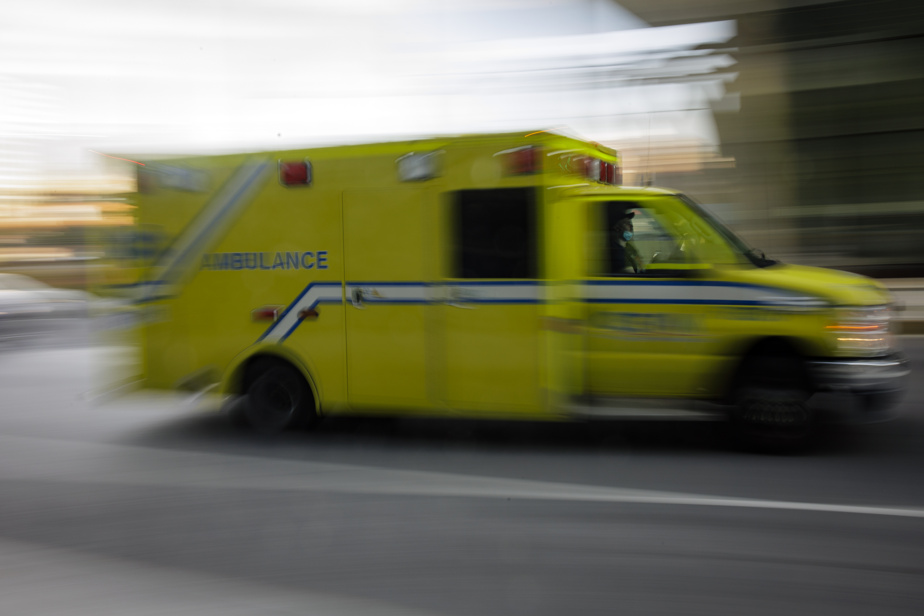Drug users on the streets of Montreal may embody the overdose crisis, but it is far from the city center that the majority of fatal poisonings occur. Three quarters of people die alone, often after drinking at home, Public Health data reveals.
This is what the Dr Benoit Corriveau, spokesperson for the Regional Public Health Directorate (DRSP) of Montreal, in an interview with The Press.
“It is a challenge for Public Health to reach people who consume alone at home,” he admits.
Between 1er January 2022 and October 5, 2023, 290 deaths from suspected poisoning occurred in Montreal, according to data provided by the DRSP.
Discussions are underway for the opening of new services in outlying neighborhoods such as Montreal-East, Montreal-North or even Rosemont, said the Dr Corriveau.
He did not comment on what form these resources could take. “We will develop services in the most affected neighborhoods over the coming months and years,” he assured.
Die alone
Three-quarters of overdoses occur among people who use alone, often in their own home.
“One of the main reasons why these people will not use drug checking services or supervised consumption rooms is geographic distance,” underlines the specialist in public and preventive health.
All the stigma surrounding the drug also isolates these users, a major issue according to the Dr Corriveau.
“There are reasons that explain consumption: a past, pain either physical or psychological,” recalls the doctor. We must show empathy towards these people, who are often excluded in society. »
Data to face the crisis
The Montreal DRSP receives preliminary data every week from the coroner concerning suspected fatal overdoses in its territory. The substances found in the urine or blood of victims allow the DRSP to direct its actions on the ground, explains the Dr Corriveau.
For example, stimulant drugs were detected in 62% of the 290 victims of deaths occurring in 2022-2023 in Montreal. Opioids were detected in 53% of deaths, and counterfeit benzodiazepines in 24% of them. Several substances can be detected at the time of an overdose.
Last Friday, The Press reported that data concerning overdoses of drugs other than opioids and fentanyl would not be available for several years across Quebec. This lack harms the fight against overdoses on the ground, according to certain community stakeholders.
In Montreal, however, this data is obtained continuously, says the Dr Corriveau. In particular, they allow the DRSP to issue alerts when a new substance causing overdoses arrives on the market.
New trends
In addition to fatal overdoses, DRSP tracks other data, such as non-fatal overdoses, substances found in different supervised consumption and drug checking agencies, emergency responses, etc.
Among the new trends, she notes the increase in fatal overdoses by inhalation in Montreal. Stimulants like crack and crystal methamphetamine (crystal meth) can be consumed by inhalation, using pipes. Opioids too.
Proportion of deaths by suspected overdose linked to drug inhalation in Montreal
- April 2021 to March 2022: 22%
- April 2022 to March 2023: 15%
- April 2023 to November 2023: 20%
Source: Montreal Regional Public Health Department
Orders for crack pipes and crystal meth by community organizations, clinics and CLSCs have also increased in recent years, observes the DRSP.
“This is why we decided to move forward with supervised inhalation services,” explains Dr.r Corriveau.
The very first, led by the community organization Benoît Labre in the Sud-Ouest borough, recently received authorization to open its doors in January 2024. Other organizations are working on similar projects.
Interventions on the rise in Montreal
Even if the majority of overdose deaths occur in private homes, this does not mean that there are no (non-fatal) overdoses elsewhere, the specialist also points out.
Emergency interventions have quintupled since 2019 in Montreal, according to the DRSP’s overdose watch. They went from 9.3 emergency interventions per month in 2019-2020 to 49 per month in 2022-2023.
The distribution of naloxone kits – this medication that can treat opioid overdose – has also exploded in recent years.
From 540 services and redistribution per month in 2019-2020, we increased to more than 1,214 in 2022-2023, according to the DRSP.
There has never been an overdose death in supervised consumption services in Montreal, where emergency interventions are commonplace, recalls the Dr Corriveau. “But could we do more? [pour déstigmatiser l’usage de drogue] ? Certainly. »
